Zhongxuan Luo
Solving Prior Distribution Mismatch in Diffusion Models via Optimal Transport
Oct 17, 2024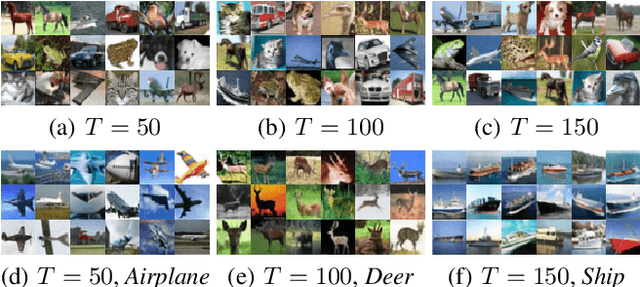

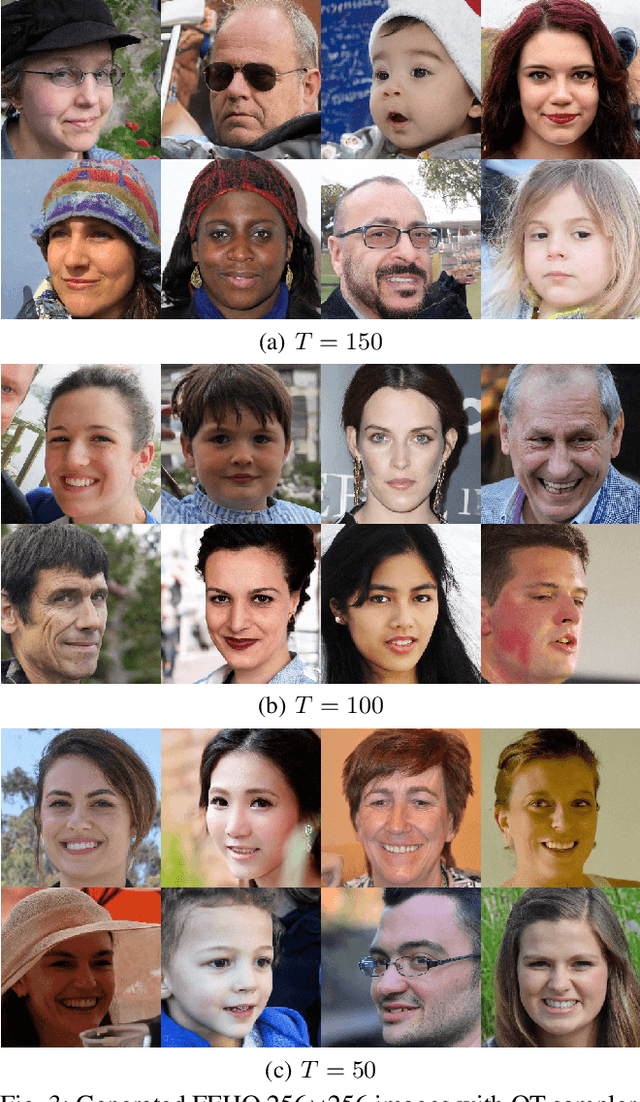
Abstract:In recent years, the knowledge surrounding diffusion models(DMs) has grown significantly, though several theoretical gaps remain. Particularly noteworthy is prior error, defined as the discrepancy between the termination distribution of the forward process and the initial distribution of the reverse process. To address these deficiencies, this paper explores the deeper relationship between optimal transport(OT) theory and DMs with discrete initial distribution. Specifically, we demonstrate that the two stages of DMs fundamentally involve computing time-dependent OT. However, unavoidable prior error result in deviation during the reverse process under quadratic transport cost. By proving that as the diffusion termination time increases, the probability flow exponentially converges to the gradient of the solution to the classical Monge-Amp\`ere equation, we establish a vital link between these fields. Therefore, static OT emerges as the most intrinsic single-step method for bridging this theoretical potential gap. Additionally, we apply these insights to accelerate sampling in both unconditional and conditional generation scenarios. Experimental results across multiple image datasets validate the effectiveness of our approach.
Global Parameterization-based Texture Space Optimization
Jun 06, 2024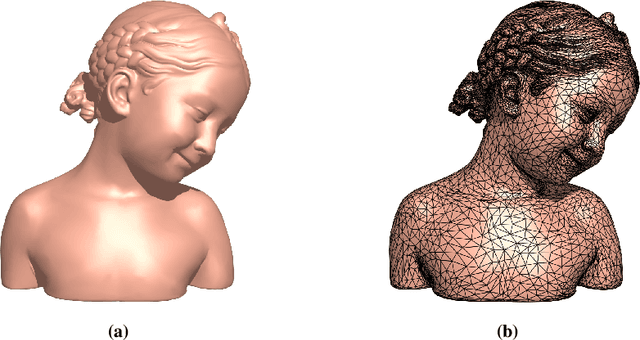

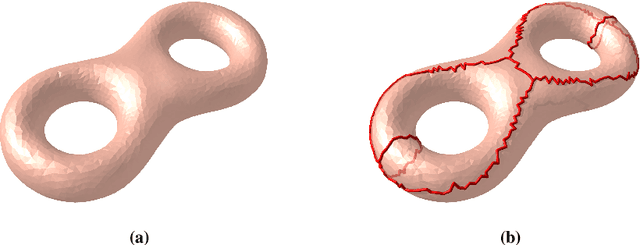

Abstract:Texture mapping is a common technology in the area of computer graphics, it maps the 3D surface space onto the 2D texture space. However, the loose texture space will reduce the efficiency of data storage and GPU memory addressing in the rendering process. Many of the existing methods focus on repacking given textures, but they still suffer from high computational cost and hardly produce a wholly tight texture space. In this paper, we propose a method to optimize the texture space and produce a new texture mapping which is compact based on global parameterization. The proposed method is computationally robust and efficient. Experiments show the effectiveness of the proposed method and the potency in improving the storage and rendering efficiency.
Learning Heavily-Degraded Prior for Underwater Object Detection
Aug 24, 2023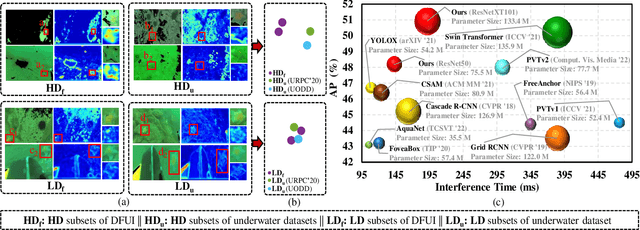
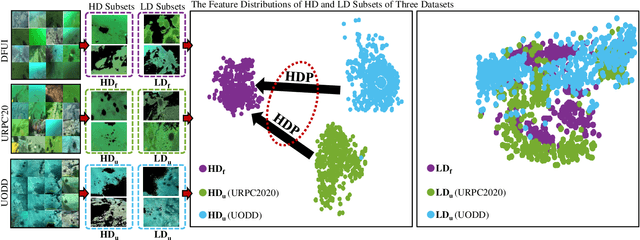

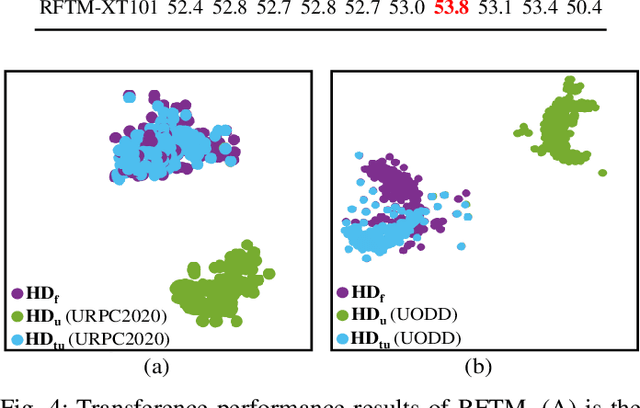
Abstract:Underwater object detection suffers from low detection performance because the distance and wavelength dependent imaging process yield evident image quality degradations such as haze-like effects, low visibility, and color distortions. Therefore, we commit to resolving the issue of underwater object detection with compounded environmental degradations. Typical approaches attempt to develop sophisticated deep architecture to generate high-quality images or features. However, these methods are only work for limited ranges because imaging factors are either unstable, too sensitive, or compounded. Unlike these approaches catering for high-quality images or features, this paper seeks transferable prior knowledge from detector-friendly images. The prior guides detectors removing degradations that interfere with detection. It is based on statistical observations that, the heavily degraded regions of detector-friendly (DFUI) and underwater images have evident feature distribution gaps while the lightly degraded regions of them overlap each other. Therefore, we propose a residual feature transference module (RFTM) to learn a mapping between deep representations of the heavily degraded patches of DFUI- and underwater- images, and make the mapping as a heavily degraded prior (HDP) for underwater detection. Since the statistical properties are independent to image content, HDP can be learned without the supervision of semantic labels and plugged into popular CNNbased feature extraction networks to improve their performance on underwater object detection. Without bells and whistles, evaluations on URPC2020 and UODD show that our methods outperform CNN-based detectors by a large margin. Our method with higher speeds and less parameters still performs better than transformer-based detectors. Our code and DFUI dataset can be found in https://github.com/xiaoDetection/Learning-Heavily-Degraed-Prior.
Bilevel Generative Learning for Low-Light Vision
Aug 07, 2023Abstract:Recently, there has been a growing interest in constructing deep learning schemes for Low-Light Vision (LLV). Existing techniques primarily focus on designing task-specific and data-dependent vision models on the standard RGB domain, which inherently contain latent data associations. In this study, we propose a generic low-light vision solution by introducing a generative block to convert data from the RAW to the RGB domain. This novel approach connects diverse vision problems by explicitly depicting data generation, which is the first in the field. To precisely characterize the latent correspondence between the generative procedure and the vision task, we establish a bilevel model with the parameters of the generative block defined as the upper level and the parameters of the vision task defined as the lower level. We further develop two types of learning strategies targeting different goals, namely low cost and high accuracy, to acquire a new bilevel generative learning paradigm. The generative blocks embrace a strong generalization ability in other low-light vision tasks through the bilevel optimization on enhancement tasks. Extensive experimental evaluations on three representative low-light vision tasks, namely enhancement, detection, and segmentation, fully demonstrate the superiority of our proposed approach. The code will be available at https://github.com/Yingchi1998/BGL.
Multi-interactive Feature Learning and a Full-time Multi-modality Benchmark for Image Fusion and Segmentation
Aug 04, 2023Abstract:Multi-modality image fusion and segmentation play a vital role in autonomous driving and robotic operation. Early efforts focus on boosting the performance for only one task, \emph{e.g.,} fusion or segmentation, making it hard to reach~`Best of Both Worlds'. To overcome this issue, in this paper, we propose a \textbf{M}ulti-\textbf{i}nteractive \textbf{F}eature learning architecture for image fusion and \textbf{Seg}mentation, namely SegMiF, and exploit dual-task correlation to promote the performance of both tasks. The SegMiF is of a cascade structure, containing a fusion sub-network and a commonly used segmentation sub-network. By slickly bridging intermediate features between two components, the knowledge learned from the segmentation task can effectively assist the fusion task. Also, the benefited fusion network supports the segmentation one to perform more pretentiously. Besides, a hierarchical interactive attention block is established to ensure fine-grained mapping of all the vital information between two tasks, so that the modality/semantic features can be fully mutual-interactive. In addition, a dynamic weight factor is introduced to automatically adjust the corresponding weights of each task, which can balance the interactive feature correspondence and break through the limitation of laborious tuning. Furthermore, we construct a smart multi-wave binocular imaging system and collect a full-time multi-modality benchmark with 15 annotated pixel-level categories for image fusion and segmentation. Extensive experiments on several public datasets and our benchmark demonstrate that the proposed method outputs visually appealing fused images and perform averagely $7.66\%$ higher segmentation mIoU in the real-world scene than the state-of-the-art approaches. The source code and benchmark are available at \url{https://github.com/JinyuanLiu-CV/SegMiF}.
DPM-OT: A New Diffusion Probabilistic Model Based on Optimal Transport
Jul 21, 2023



Abstract:Sampling from diffusion probabilistic models (DPMs) can be viewed as a piecewise distribution transformation, which generally requires hundreds or thousands of steps of the inverse diffusion trajectory to get a high-quality image. Recent progress in designing fast samplers for DPMs achieves a trade-off between sampling speed and sample quality by knowledge distillation or adjusting the variance schedule or the denoising equation. However, it can't be optimal in both aspects and often suffer from mode mixture in short steps. To tackle this problem, we innovatively regard inverse diffusion as an optimal transport (OT) problem between latents at different stages and propose the DPM-OT, a unified learning framework for fast DPMs with a direct expressway represented by OT map, which can generate high-quality samples within around 10 function evaluations. By calculating the semi-discrete optimal transport map between the data latents and the white noise, we obtain an expressway from the prior distribution to the data distribution, while significantly alleviating the problem of mode mixture. In addition, we give the error bound of the proposed method, which theoretically guarantees the stability of the algorithm. Extensive experiments validate the effectiveness and advantages of DPM-OT in terms of speed and quality (FID and mode mixture), thus representing an efficient solution for generative modeling. Source codes are available at https://github.com/cognaclee/DPM-OT
OT-Net: A Reusable Neural Optimal Transport Solver
Jun 14, 2023Abstract:With the widespread application of optimal transport (OT), its calculation becomes essential, and various algorithms have emerged. However, the existing methods either have low efficiency or cannot represent discontinuous maps. A novel reusable neural OT solver OT-Net is thus presented, which first learns Brenier's height representation via the neural network to obtain its potential, and then gained the OT map by computing the gradient of the potential. The algorithm has two merits, 1) it can easily represent discontinuous maps, which allows it to match any target distribution with discontinuous supports and achieve sharp boundaries. This can well eliminate mode collapse in the generated models. 2) The OT map can be calculated straightly by the proposed algorithm when new target samples are added, which greatly improves the efficiency and reusability of the map. Moreover, the theoretical error bound of the algorithm is analyzed, and we have demonstrated the empirical success of our approach in image generation, color transfer, and domain adaptation.
A Task-guided, Implicitly-searched and Meta-initialized Deep Model for Image Fusion
May 25, 2023Abstract:Image fusion plays a key role in a variety of multi-sensor-based vision systems, especially for enhancing visual quality and/or extracting aggregated features for perception. However, most existing methods just consider image fusion as an individual task, thus ignoring its underlying relationship with these downstream vision problems. Furthermore, designing proper fusion architectures often requires huge engineering labor. It also lacks mechanisms to improve the flexibility and generalization ability of current fusion approaches. To mitigate these issues, we establish a Task-guided, Implicit-searched and Meta-initialized (TIM) deep model to address the image fusion problem in a challenging real-world scenario. Specifically, we first propose a constrained strategy to incorporate information from downstream tasks to guide the unsupervised learning process of image fusion. Within this framework, we then design an implicit search scheme to automatically discover compact architectures for our fusion model with high efficiency. In addition, a pretext meta initialization technique is introduced to leverage divergence fusion data to support fast adaptation for different kinds of image fusion tasks. Qualitative and quantitative experimental results on different categories of image fusion problems and related downstream tasks (e.g., visual enhancement and semantic understanding) substantiate the flexibility and effectiveness of our TIM. The source code will be available at https://github.com/LiuZhu-CV/TIMFusion.
Practical Exposure Correction: Great Truths Are Always Simple
Dec 29, 2022Abstract:Improving the visual quality of the given degraded observation by correcting exposure level is a fundamental task in the computer vision community. Existing works commonly lack adaptability towards unknown scenes because of the data-driven patterns (deep networks) and limited regularization (traditional optimization), and they usually need time-consuming inference. These two points heavily limit their practicability. In this paper, we establish a Practical Exposure Corrector (PEC) that assembles the characteristics of efficiency and performance. To be concrete, we rethink the exposure correction to provide a linear solution with exposure-sensitive compensation. Around generating the compensation, we introduce an exposure adversarial function as the key engine to fully extract valuable information from the observation. By applying the defined function, we construct a segmented shrinkage iterative scheme to generate the desired compensation. Its shrinkage nature supplies powerful support for algorithmic stability and robustness. Extensive experimental evaluations fully reveal the superiority of our proposed PEC. The code is available at https://rsliu.tech/PEC.
CoCoNet: Coupled Contrastive Learning Network with Multi-level Feature Ensemble for Multi-modality Image Fusion
Nov 20, 2022Abstract:Infrared and visible image fusion targets to provide an informative image by combining complementary information from different sensors. Existing learning-based fusion approaches attempt to construct various loss functions to preserve complementary features from both modalities, while neglecting to discover the inter-relationship between the two modalities, leading to redundant or even invalid information on the fusion results. To alleviate these issues, we propose a coupled contrastive learning network, dubbed CoCoNet, to realize infrared and visible image fusion in an end-to-end manner. Concretely, to simultaneously retain typical features from both modalities and remove unwanted information emerging on the fused result, we develop a coupled contrastive constraint in our loss function.In a fused imge, its foreground target/background detail part is pulled close to the infrared/visible source and pushed far away from the visible/infrared source in the representation space. We further exploit image characteristics to provide data-sensitive weights, which allows our loss function to build a more reliable relationship with source images. Furthermore, to learn rich hierarchical feature representation and comprehensively transfer features in the fusion process, a multi-level attention module is established. In addition, we also apply the proposed CoCoNet on medical image fusion of different types, e.g., magnetic resonance image and positron emission tomography image, magnetic resonance image and single photon emission computed tomography image. Extensive experiments demonstrate that our method achieves the state-of-the-art (SOTA) performance under both subjective and objective evaluation, especially in preserving prominent targets and recovering vital textural details.
 Add to Chrome
Add to Chrome Add to Firefox
Add to Firefox Add to Edge
Add to Edge